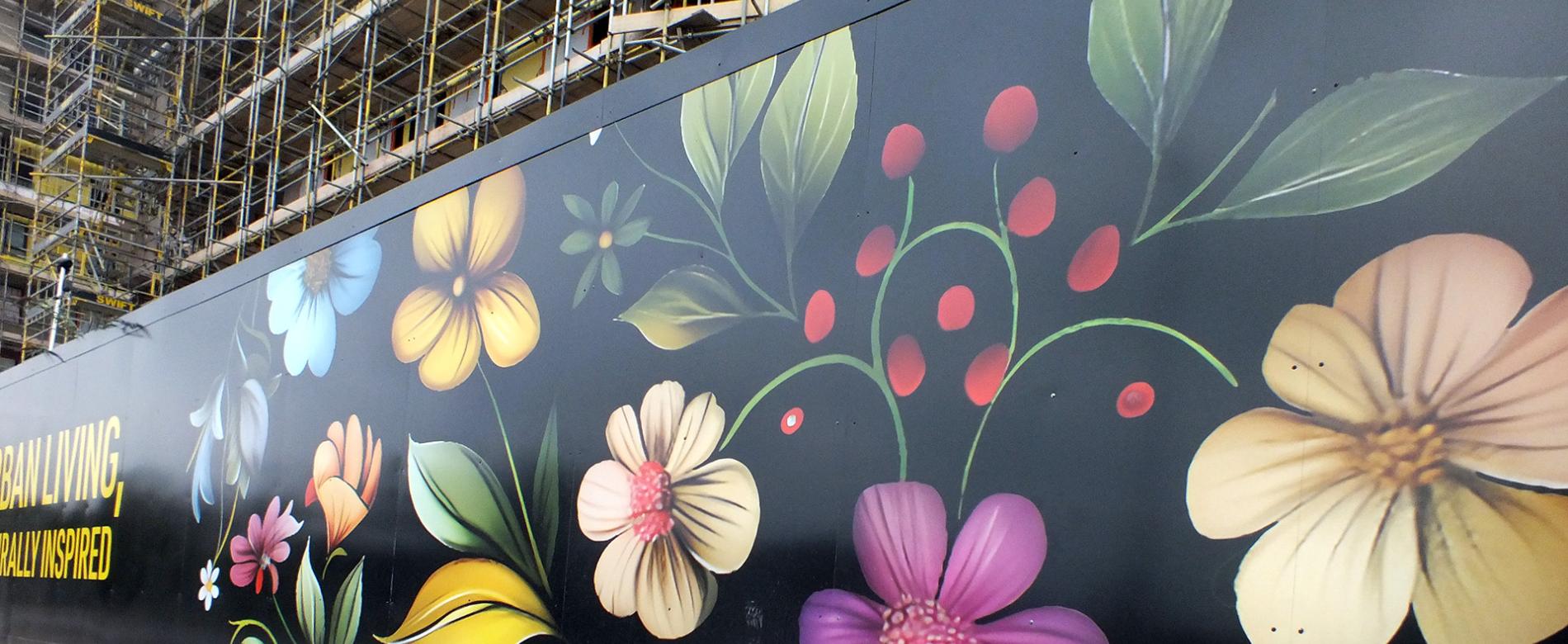Is Your Site Hoarding as Sustainable as You Think?
Let’s be honest. On construction sites, sustainability tends to focus on the big-ticket items - energy use, building materials, waste streams. But what about the most visible part of your project?
We’re talking about your site hoarding - the first thing passers-by, stakeholders, and potential buyers see. The massive printed panels that stretch around the perimeter of your site, projecting your brand and your values to the world.
So here’s the question:
Are those hoardings actually supporting your sustainability commitments, or just looking the part?
The Truth About Standard ACM Hoardings
Aluminium Composite Material (ACM) is the go-to material for construction hoardings — and for good reason. It’s tough, weatherproof, and delivers clean, professional-looking graphics.
But there’s a catch.
The standard approach - used across thousands of UK sites - typically involves:
- ACM panels imported from overseas (often China)
- A layer of PVC vinyl graphics
- A plastic anti-graffiti laminate on top
The result? A panel that looks good, lasts the course of the build…
...and then heads straight to landfill.
Why? Because while ACM is technically recyclable, once it’s laminated with plastic films and vinyl, the panel becomes virtually impossible to recycle in any meaningful way.
Cheap Now. Costly Later.
Let’s not sugar-coat it - the traditional approach is popular because it’s cheap and familiar. Suppliers know it. Clients rarely question it. And on the surface, it works.
But if your project is pushing ESG targets, aiming for BREEAM credits, or simply trying to reduce its environmental footprint - it’s worth asking:
Is your supplier choosing these materials for your benefit, or because it’s easier and cheaper for them?
What a More Responsible Option Looks Like
Sustainability doesn’t mean compromise. It means better choices, made early and made consciously.
A better hoarding system might include:
- UK-manufactured ACM panels with recycled content
- Graphics printed direct-to-substrate with solvent-free inks
- A PVC-free liquid laminate to protect against UV and graffiti
- Panels designed for reuse or true end-of-life recyclability
It’s not just greener - it can be cleaner, lighter, easier to install, and increasingly cost-competitive as demand for sustainable materials grows.
Reputation is On the Line
Your hoardings don’t just frame the build - they frame your brand.
In an industry where everyone’s talking about carbon, transparency, and green credentials, there’s no room for outdated materials wrapped in marketing spin.
If your hoarding isn’t living up to your sustainability story, people will notice.
And they’ll ask questions.
A Few Questions Worth Asking Your Current Supplier
- Are the materials used in your hoardings fully recyclable after installation?
- Do you offer PVC-free alternatives - and if not, why not?
- Are the panels made in the UK or shipped halfway across the world?
- Can you support panel reuse, or take-back schemes?
- How do your solutions help us hit our ESG goals?
It’s Time to Rethink the Norm
The construction industry is evolving - and fast. Site hoardings are no longer just a temporary necessity. They’re a visible commitment to your values, and an opportunity to lead by example.
At Octink, we’ve invested in the materials, methods and mindset to deliver hoarding solutions that work hard for your project - and for the planet.
We’re not here to preach. We’re here to help you ask better questions, make better choices, and avoid falling into the trap of green-in-name-only materials.
So next time you walk past your own hoardings, ask yourself:
Is this really as sustainable as we think it is?

